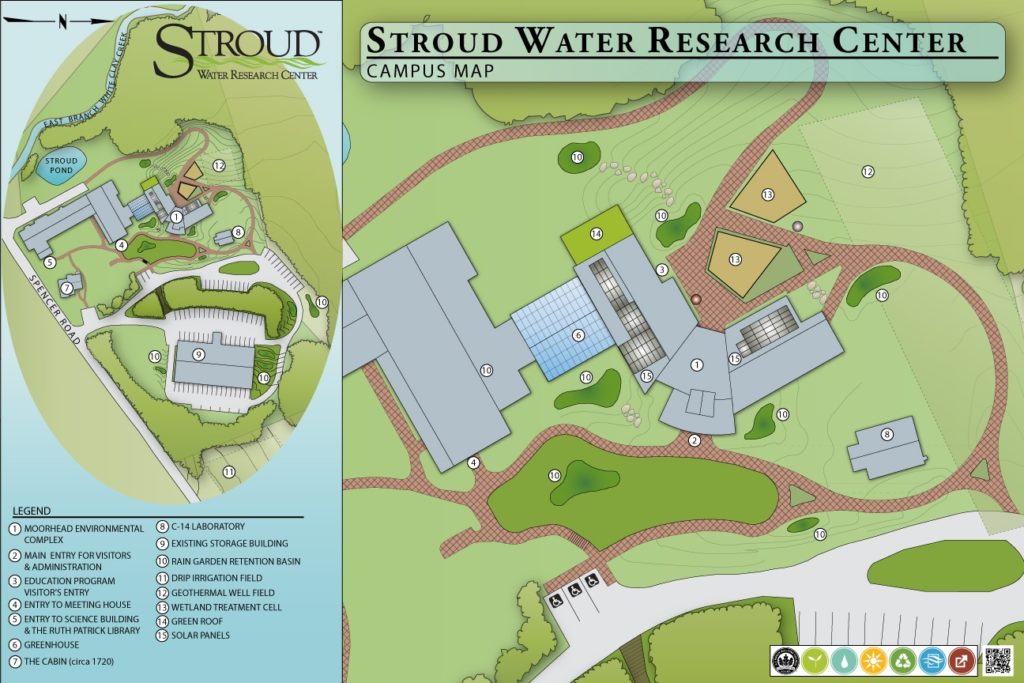Campus History and Map
(Need directions to the Stroud Center? Click here)
Origins and Inspirations
One of the most striking aspects of our campus is how well its design reflects the rural character and heritage of Chester County.
Stroud Water Research Center is a place of contrasts — rustic in appearance yet sophisticated in operation, filled with art and devoted to science. It evokes a sense of warmth and comfort that is an ideal climate for our flourishing research.
The original building sits on the site of an 18th-century barn and incorporates the barn’s stone wall into the Ruth Patrick Library. Our lecture space echoes the architecture of two nearby Quaker meetinghouses. Removing old siding from a run-down house across the courtyard revealed a log cabin dating to about 1720. The cabin has been restored to its original style and now houses visiting scientists.
Since 1967 we have grown into a modern, well-equipped campus situated on a country road and overlooking White Clay Creek, a nationally designated Wild and Scenic River.
 Timeline
Timeline

- 1966: Stroud Water Research Center begins its existence in a space above Joan and Dick Stroud’s garage.
- 1968: The Stroud Center’s original building is completed.
- 1974: The research programs outgrow their space. Additional space is required for graduate and post-doctoral students, classrooms, and a lecture room.
- 1976: Additions are completed. The Center has adequate space to offer courses to university students, provide opportunities for professional groups to come and learn about new research findings, and host a public lecture series.
- 1993: It becomes clear that the growing research and education programs have again outgrown their space. Planning begins for the next expansion.
- 1996: Major expansion adds research laboratories, a teaching laboratory, and a lunchroom and expands collections storage areas, visiting scientist office space, and the meeting room. The 24,820-square-foot facility is now four times the size of the original building.
- 1999: The final project of this phase — a new streamhouse for both research and education — is dedicated in October 1999.
- 2012: The Moorhead Environmental Complex is added to the campus, adding new space for education and public outreach in a state-of-the-art “green building.”
- 2015: An outdoor classroom that lets visitors explore White Clay Creek is added to enhance field-based learning, an integral part of our education programs.
